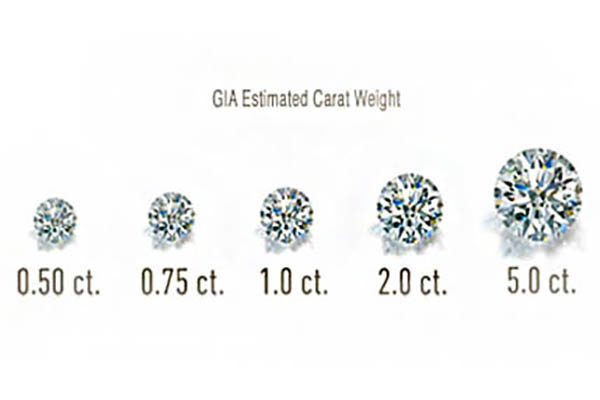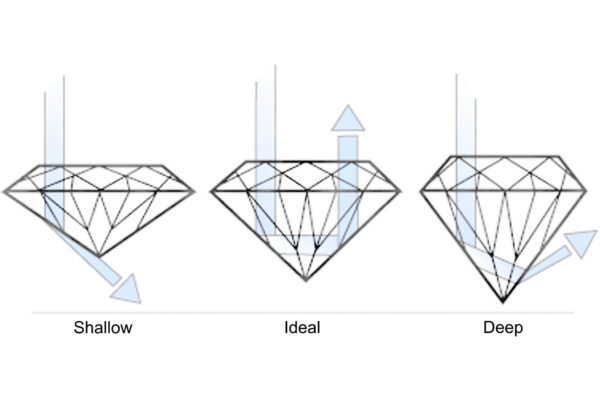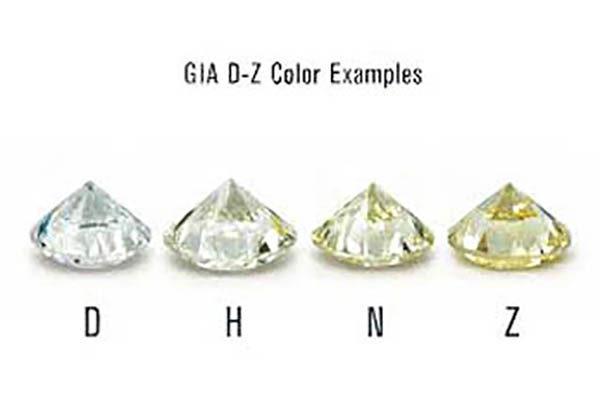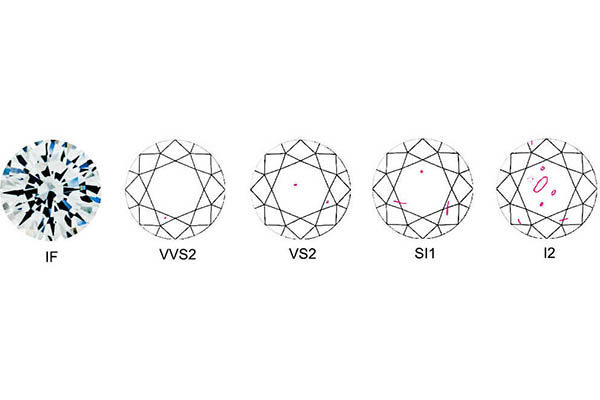Four C’s
Buying a diamond will seem daunting at times; however, it is an experience that symbolises one of the most exciting moments in your life and should be enjoyed.
There are some key factors to consider when investing in a diamond that suits your need and budget.
The most commercial grading system is referred to as the 4 C’s. Since the introduction of certificates it has now become the 5 C’s. They refer to the Cut, Colour, Clarity, Carat and Certificate.
The Shape
The shape of a diamond refers to its exterior shape. Some of the more common shapes include the round brilliant cut, oval, princess, cushion, emerald and pear-shape, to name just a few.
The shape of a diamond has no bearing on the quality of the gem. Each shape has its own beauty and shape is simply a cosmetic decision based on your individual taste.
The Colour
A diamond’s colour is graded on an alphabetical scale, starting from D (colourless) to Z (light yellow or brown). The lack of colour in a diamond will result in a higher grading.
Other shades such as pink, yellow, cognac or champagne are classified as “Fancy coloured diamonds” and are graded using a different scale.
The value of a diamond is greatly influenced by its colour grade or colourlessness.
The Clarity
The clarity of a diamond is measured by the presence or absence of internal features (referred to as inclusions), and surface characteristics (known as blemishes).
These inclusions and blemishes are graded on a scale starting from FL (Flawless) to I3 (Imperfections level 3).
The position and size of the inclusions and blemishes will affect the clarity grading of a diamond and consequently impact its value.
The Carat
The carat is a unit of measure that determines the weight of a diamond, similar to the weighting measure of grams and kilograms.
People will often incorrectly associate this unit of measure with the size of the diamond.
It is significant to note that diamonds of the same weight may not always be the same size. Whilst size and weight will significantly impact the value of a stone, they should not be assessed in isolation from the other “C’s”

The Certification
This is the new addition to the 4 C’s, or the ‘5th C’ as it has become known.
A diamond certificate is similar to a ‘birth certificate’ for your diamond. It provides an unbiased outline of the diamond’s cut, colour, clarity and carat, along with detailed measurements.
Some laboratories are more reputable than others, with parameters used in grading varying significantly.
The GIA (Gemmological Institute of America) are the inventors of both the 4C’s and the diamond grading system. Accordingly, the GIA tends to be the most widely accepted authority for certification.
The Fluorescence
Fluorescence is not a grading; it is a characteristic of a diamond. It measures the diamond’s emission of a soft coloured glow that is evident under ultra violet light.
The most common colour for fluorescence is blue.
In many instances the appearance of fluorescence in a diamond is not noticeable. The presence of fluorescence can sometimes have a positive effect on a diamond giving it a bright shiny glow. Instances where fluorescence has an adverse effect can be seen when the gem appears hazy or oily.






